Building a home recording studio can be stressful but it doesn’t need to be.
There is an endless supply of gear for recording music and we’ve done our best to avoid confusing you.
This guide will only be showing the bare essential home recording equipment that you need to start being creative.
Technology in the music production space has taken off in the last few years. This is a huge benefit to bedroom producers or those looking to build a home recording studio to have a little side hustle.

Costs have been dropping and budget equipment is beginning to hold the features of more pricey models. The benefit of this means that you’ll be able to find high-quality gear at a very low price point.
This allows you to start off simple with a few pieces of gear that you’ll need. This is a great start for when you decide to level up and replace parts of your home recording studio setup.
We’ve created a basic checklist for what you’ll need to start getting your studio together and get you being creative.
Top 10 Recommended Gear for Basic Home Recording Studio Setup:
- Computer/Laptop
- Digital Audio Workstation (DAW) Software
- Audio Interfaces
- Headphones
- Studio Monitors
- Microphone
- Microphone Stand
- Pop Filter
- Acoustic Treatment
- Audio Cables
remember that if you’re just starting out, it’s best to keep this as simple as possible.
Building a home recording studio can really get complicated so unless you feel like you’re an expert, you might want to stick to this guide or drop us a comment below and ask about what you’re planning on buying.
The 10 Best Home Recording Studio Equipment Essentials for New Musicians
Computer/Laptop

We’re going to assume that you already have a computer that can handle the requirements of a DAW and if that’s the case, you can keep scrolling.
Most computers made in the last few years won’t have any issues with running a DAW in a home recording studio setting.
What you need to be mindful of is when you start adding tracks, soft synths, effects, etc.
All these extras that you add into your workflow will eat up your RAM and CPU. Having a fast computer means you can keep your workflow going strong. You’ll avoid hiccups or daw software crashes.
Recommended Minimum Specs for Music Production:
- 2ghz+ Intel® Core™ i5 processor or faster recommended.
- 8GB RAM or more.
- 1080p or 1440p display.
- 256GB SSD or larger
- Windows 10/OS X 10.12 or later.
If your current machine has these specs or higher, you’re in a good place to start making music.
If not, check the link below to check out our music production computer guide.
Best Computers for Music Production
View our recommendations for the best computers for music production and recording in a home recording studio.

Digital Audio Workstation (DAW) Software

Your DAW which stands for Digital Audio Workstation is the brains of your home recording studio.
A DAW is a platform to support and control the audio editing, plugins, VSTs, and MIDI.
As you start your musical journey, you’ll be spending tons of your time working with it. You’ll be learning everything there is to know about the DAW that you chose to maximize your creative potential.
It’s important to try a few different DAWs to ensure that you find one that:
- It has a small learning curve.
- Works well with your music production workflow.
- It is well supported and has a big community.
- Within your budget.
A few of the most common paid DAWs are:
- Ableton Live
- FL Studio
- Presonus Studio One 4
- MOTU Digital Performer 11
- Apple Logic Pro X
- Avid Pro Tools
- Cakewalk SONAR
- Reason Studios Reason 12
- Cubase 12
- Cockos Reaper
We highly recommend using a paid DAW, this will be your bread and butter. It is the foundation in which your music is created.
Some free DAWs:
- Audacity
- Pro Tools First
- Caustic
- GarageBand
- Tracktion t6
- Audiotool
- Ardour
- Jeskola Buzz
While we recommend not using a free DAW, you’ll learn a lot by digging around and making mistakes.
If you want to learn more about DAWs and read some rundowns on the different options, please check out the DAW Guide.
Ultimate Guide to Digital Audio Workstations
Choosing a DAW is an extremely important step in your career in recording or music production. Check out this guide to help with your decision on what DAW to use.
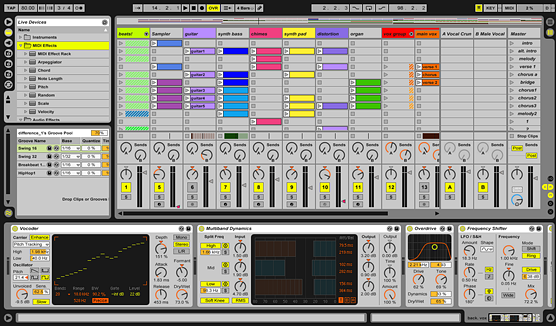
Audio Interfaces

The audio interface has to be one of the most complex items in a home recording studio. There are so many types and applications for them.
An audio interface is essentially a high-quality external sound card.
- You plug your microphones and instruments into it.
- It allows you to plug it in via USB, firewire or Thunderbolt to your computer.
- The interface acts as a device to hook up headphones and studio monitors.
Let’s talk about the different types of audio interfaces:
- Desktop Interfaces
- Rack-mounted Interfaces
Desktop interfaces are what most home recording studio and bedroom producers use. They’re small, and usually, are enough for most musicians. Desktop audio interfaces are a great starting point.
You’ll only need a 2-6 channel interface to get started.
Rack-mounted interfaces are used in intermediate home recording studios where the engineer requires 8 channels or more. This allows for more microphones and line inputs. This allows for less reconfiguring during a recording session.
To avoid doubling up on what we’ve already covered, please check out our audio interface guide.
Audio Interfaces 101
Buying an audio interface is the most difficult part of setting up a home recording studio. Check out this guide to help with your purchase.

Headphones

One of my absolute favorite topics, studio headphones.
Headphones are a very important piece of studio equipment to have. They can make or break a mix and can help with working late nights without your neighbors knowing.
Before we get into what makes a good pair of home recording studio headphones, let’s talk about the types of headphones.
Closed-back headphones have a speaker mounted against a solid cup which helps with noise isolation. These types of headphones are great for monitoring and recording audio. The benefit comes from greater noise isolation when recording tracks.
Open-back headphones have a perforated ear cup allowing sound to move freely in and out. These headphones won’t block outside noise. With open-back headphones, you’re more likely to experience a natural airy sound. Open-back headphones are most useful when mixing tracks.
So, which type should you get?
We highly recommend getting a pair of closed-back headphones as a starting point if you’re just looking to get up and running and start producing music.
Which Studio Headphones Should You Buy?
Closed back, open back, wireless? Choosing headphones can be difficult. Check out this guide for more in-depth detail about why they are all important.

Studio Monitors

Studio monitors are a necessity for referencing your tracks in your home recording studio.
What a good studio monitor gives you is flat frequency response. This sound profile allows for the music you’re recording to be completely accurate when mixing.
There are a few different types of studio monitors that we recommend:
- Near-field Monitors
- Far-field Monitors
Near-field Monitors are best for being within a close listening distance to you. 3-5 feet from the mixing chair is ideal.
Far-field Monitors are large speakers that mount in the studio, behind the console. These speakers are great for high volume and for testing the low end of your mix.
Different monitors are useful for different spaces. You need to understand your room and ensure that it is optimized with acoustic treatment.
It’s a good rule of thumb that monitors are never perfect. It comes down to the genre, how your room is acoustically treated and the distance from you.
We go deep in-depth in our Studio Monitors Guide, check it out below.
Studio Monitor Buyers Guide

Microphone

If you’re a singer or are looking to record instruments, you’ll need to get a decent microphone to help with that.
If you take a look at a site like Musician’s Friend or Sweetwater, you’ll see that there are hundreds of microphones.
Let’s go over a few different types of microphones for home recording:
- Large Diaphragm Condenser
- Small Diaphragm Condenser
- Dynamic
- USB Microphones
Large-diaphragm microphones are best used for solo instruments or vocals. They are a good starting microphone as they are very versatile and can record anything.
Small Diaphragm Condenser microphones are great for producing a detailed sound image. You’ll get way more detail recording an instrument with a small diaphragm. There is no “padding” of your sound. The results will be very real.
Dynamic or Moving Coil Microphones are usually used for live sound. It’s pretty rare to see a dynamic microphone used in a studio. They’re great to have when setting up microphones for an amplifier.
We recommend picking up a nice large diaphragm condenser microphone if you’re on a budget. This will cover all your bases.
Studio Microphone 101
Large diaphragm condenser, small diaphragm condenser, dynamic microphones… which should you go with?
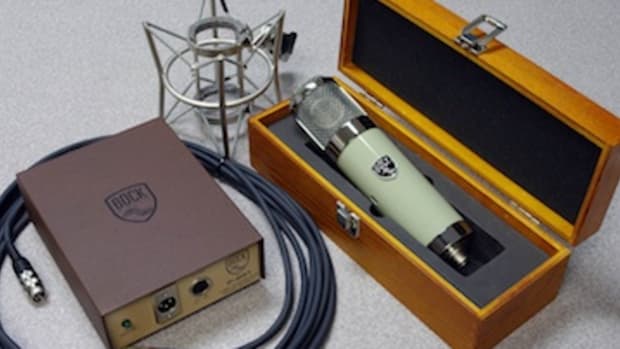
Microphone Stand

Now that you’ve decided on the perfect microphone for your studio, it’s time to get a few accessories.
A microphone stand is an essential piece of equipment in a home recording studio. I doubt you want your vocalist focusing on holding the microphone.
Let’s take a look at what types of microphone stands are available:
- Tripod Boom
- Tripod
- Round Base
- Low Profile
- Desktop
- Overhead
Tripod Boom Stands are one of the most common stands. You can use this if you need some long reach between the subject and the microphone.
Tripod Stands are what you think about when you think about a microphone stand. It’s a simple stand where you attach the microphone at the top.
Round Base Stands are great for live sound when you have a small stage. The small base will prevent people from tripping over it or cables getting snagged.
Low Profile Stands are exclusively used for setting up microphones for guitar amps, kick drums, anything very low to the ground.
Desktop Stands are great for bedroom studio setups. They are very common with podcasters and people who have a small studio space.
Overhead Stands are mainly used for recording drums or getting a better sound from a room.
Choosing a microphone stand isn’t as difficult as buying the microphone itself. They all do the job. So pick one that works best for where you want your mic.
Top 5 Best Microphone Stands and Buyer’s Guides
We’ve got the best microphone stands for every type of microphone in your home recording studio.
Pop Filter
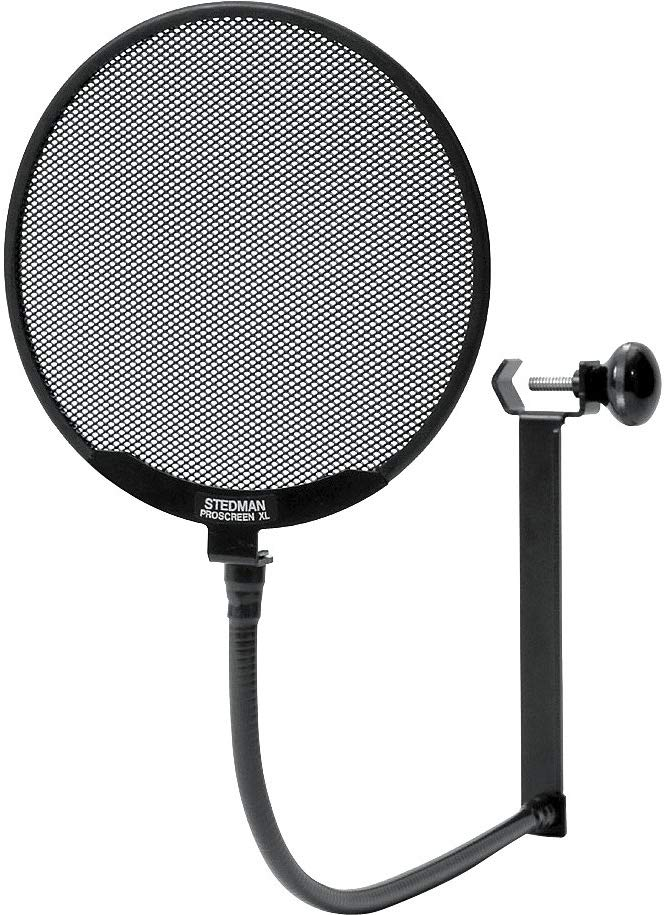
A pop filter is a screen that goes between the microphone and the singer. If you’re setting up a home recording studio to record vocals, you need one of these. Trust us.
Pop filters prevent unwanted noises. It will filter out all of the “P”, “B” and breathing from your recording.
5 Best Pop Filters For Recording Vocals [2021 Buyer’s Guide]
Pop filters are an essential item in every recording studio. We’ve reviewed the 5 best pop filters for recording vocals to help you make a buying decision
How much do home recording studios cost?
Building a home studio can cost as little as few hundred dollars for a basic but functional home studio setup involving an audio interface, microphone, monitors, some basic acoustic treatment, and a good DAW. Home recording studios become high cost when construction happens such as building proper vocal booths and complex cabling guidance.
Final Thoughts on Home Recording Studio Essentials for New Musicians
This list should get you started crafting the home recording studio of your dreams! Remember to keep it simple at the start, and stick to your budget. You can expand with new and improved equipment over time, as you discover your ever evolving needs. We can’t wait to hear the music that is waiting to burst fourth from your imagination!




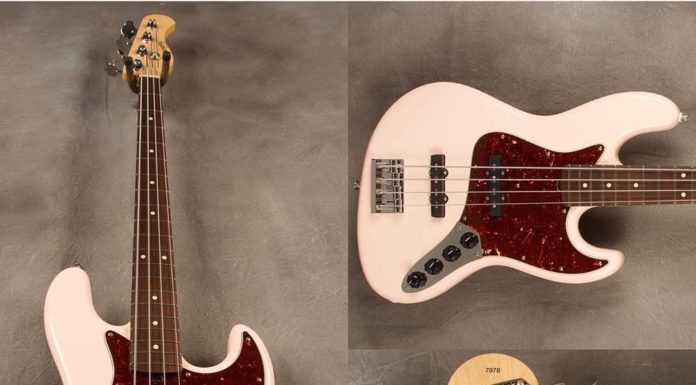
![5 Best Closed-Back Headphones [Reviews & Buyer’s Guide] Closed back headphones](https://homestudiohub.com/wp-content/uploads/2020/03/null-19-80x60.jpeg)






